
12 minute read
Drivetrains: Tracks & Tires
CONTINENTAL
LEFT: The Conti e.MotionPro concept was developed for an electric truck from MAN.


BELOW: ContiPressureCheck features a sensor embedded in the tire to monitor tire performance and issues alerts on an in-cab display.
The Impact of Autonomous and Electric Vehicles on TIRE DESIGNS

Unique requirements of autonomous and electric vehicles will bring about the need for new tire and wheel solutions.
by Sara Jensen


With autonomous and electric vehicles continuing to become more commonplace, their designs are impacting many components and systems including the tires. Research fi rm Smithers released a report earlier in 2020 examining the impact of autonomous vehicles on tires. It found tire materials and components, tire retail and tire marketing will be the most aff ected.
Smithers’ report went on to note tires for autonomous vehicles will: • place a greater emphasis on durability, over handling and other performance criteria; • accelerate the adoption of smart tires with sensing and reporting functions;
• see more use of low maintenance or planned tire monitoring platforms to manage fl eets of shared AVs; • demand lower weight tires to extend mobility, especially for electric vehicles.
Continental says with the trend toward automation, the impact of the toward automation, the impact of the driver on driving behavior and operadriver on driving behavior and operational processes will become obsolete. tional processes will become obsolete. As such, tire designs will need to As such, tire designs will need to evolve to account for these changes in evolve to account for these changes in driving behavior. driving behavior. “Electric and au“Electric and autonomous vehicles tonomous vehicles are becoming are becoming more popular more popular due to operating due to operating effi ciencies,” says effi ciencies,” says Ron Tatlock, ManRon Tatlock, Manager – Training ager – Training & Engineering & Engineering at BKT USA, Inc. at BKT USA, Inc. “Designing tires for “Designing tires for optimum tire and optimum tire and vehicle performance vehicle performance on electric and on electric and autonomous vehicles autonomous vehicles will help owners maxwill help owners maximize the effi ciencies imize the effi ciencies and control the cost of and control the cost of operation.” operation.”
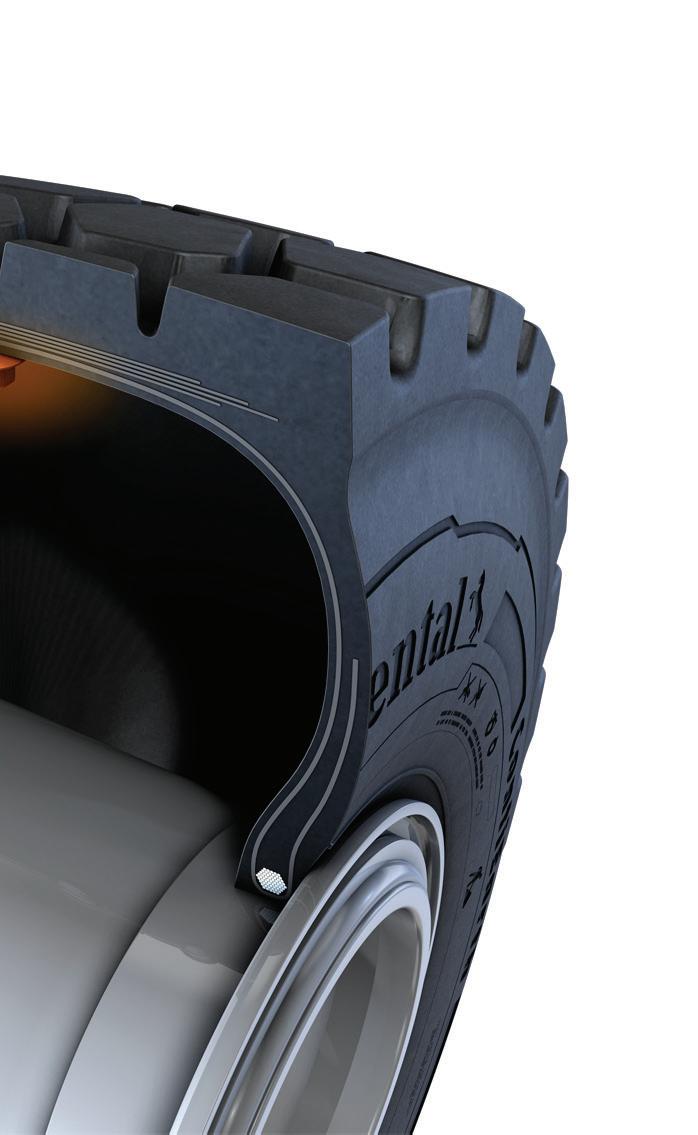
Special considerations based on vehicle type
Aaron Dahl, Chief Engineer Americas at GKN Wheels, says it is important to note design challenges raised by electric vehicles and those by autonomous vehicles are diff erent and therefore require diff erent solutions. Dahl says autonomous vehicles in general require wheels and tires that provide increased durability, strength, and longevity whereas the challenge with electric vehicles comes in the application of torque and the diff erent demands this imposes on wheels and tires.
Julian Alexander, Product Line Manager Material Handling at Continental, notes the diff erent requirements required by both vehicle types places great demands on tire manufacturers. Forklifts, for instance, are already electric and are quickly becoming more automated. Tires for these vehicles must be robust, heat resistant and durable, especially if automated Alexander says, because they are able to run 24 hours a day, 7 days a week which can create a lot of wear. However, electric vehicle tires must have as low a rolling resistance as possible. Alexander says these requirements are contradictory, making it integral for a tire manufacturer “to keep close relationships with the customers to understand their specifi c needs [and] keep coming up with the right fi t for their vehicles.”
Tatlock says lower rolling resistance is an important feature for electric vehicles to help preserve the stored electrical energy on a vehicle— decreased rolling eff ort of these tires leads to a reduction in the amount of energy needed to move the vehicle. Minimizing the amount of energy used by the tires helps to ensure the vehicle can operate as long as possible before recharging is necessary.
Design considerations to minimize tread wear from tire to surface slippage when the vehicle begins to move is also integral for electric vehicles, says Tatlock. This is because electric drivetrains are capable of nearly instanta
neous torque at the full motor power, eliminating motor ramp up or drivetrain slippage. The full torque of the drive motors is thus instantly applied to the tires which can increase the amount of wear they will experience over their lifetime. “Also, tire casings must be robust enough to handle this unthrottled torque,” he adds.
Tire slippage between tire and rim as well as tire and ground surface must be taken into consideration due to the increased amount of torque being placed on the tires of electric vehicles, says Gianpietro Bramè, Global and European Chief Engineer Wheels at GKN Wheels. This is already a common problem in the agriculture industry due to the increasing size and horsepower rates of equipment. As such, GKN Wheels developed its Profi -Grip wheel rim which has demonstrated the ability to eliminate tire slippage. “We are therefore confi dent that we have the experience, expertise and necessary tools to respond both to tire
In the future, the design of and technologies used in machinery, including tires, will be even more tailored to their working environment.

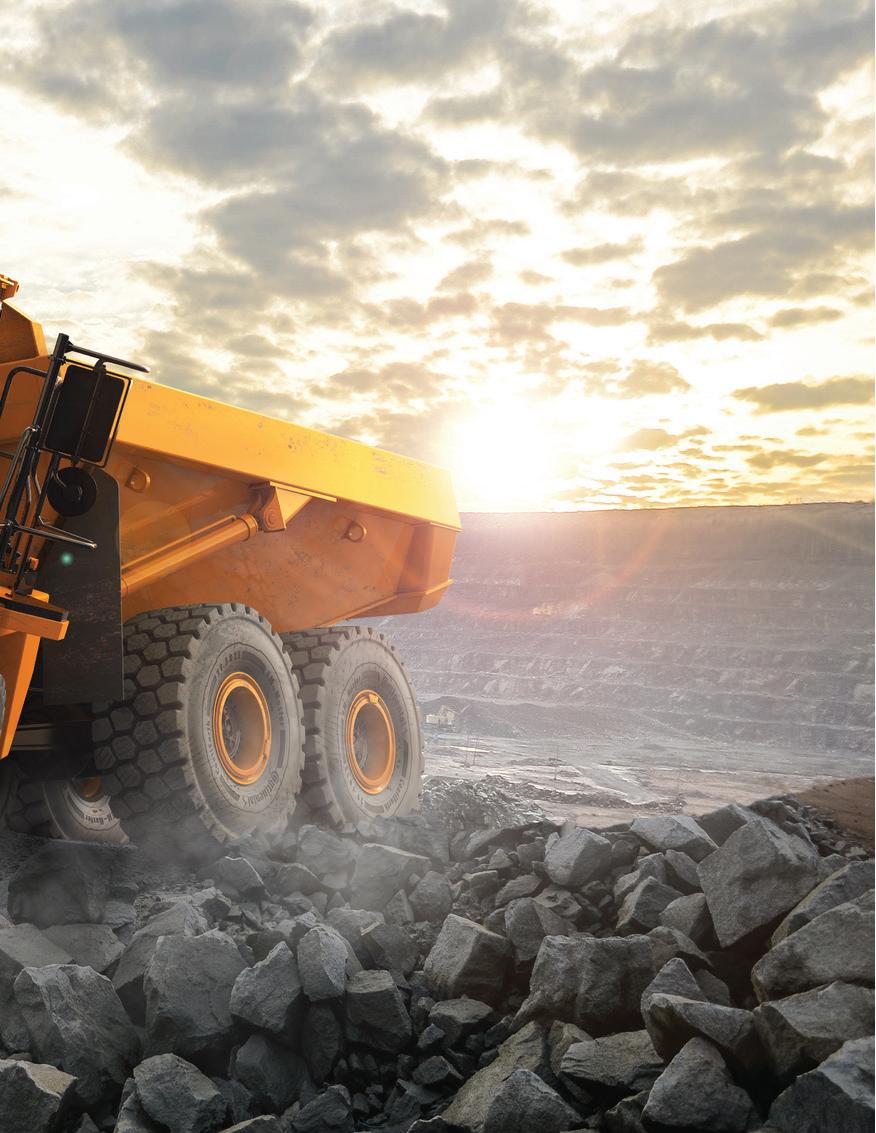


slippage, and to completely new challenges that the use of electric vehicles may present,” says Bramè.
Dahl says tire slippage will likely be an issue for electric vehicles in the construction industry as well. Both Dahl and Bramè say wider tire bead designs may be one of the methods used to overcome this. However, this will impact rim design, making it integral for tire, wheel and

equipment manufacturers to work together to achieve the right design for an application.
Dahl notes wider tires and larger diameter wheels to help spread the torque could also be a solution to overcoming tire slippage. Increased torque application associated with
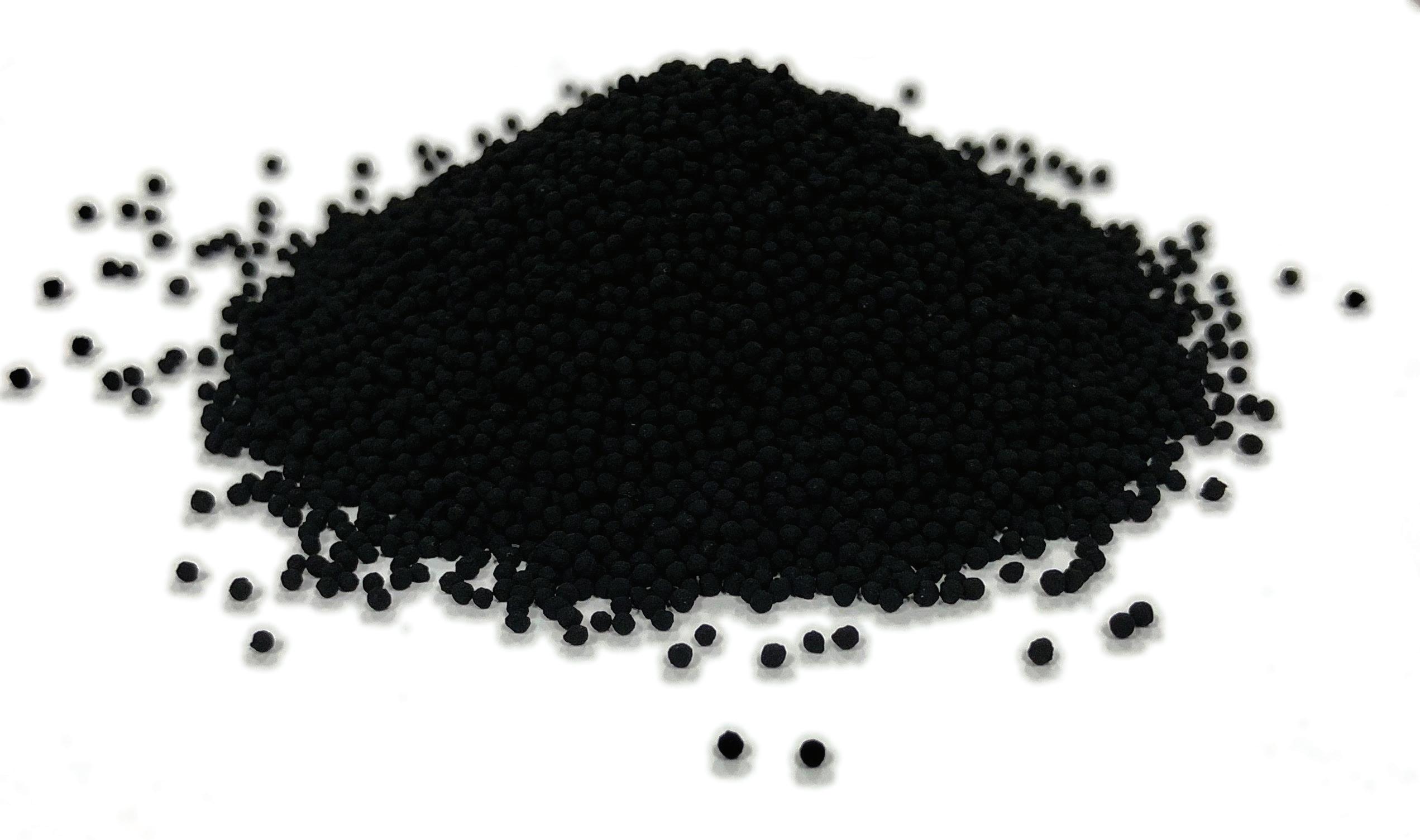
Recovered carbon black is one of the more sustainable materials Continental is using in some of its tires.
More monitoring tools will be necessary to ensure optimal performance of tires in various applications.
electric vehicles may lead to challenges with bolted joints and disc designs, as well, which he again notes GKN Wheels has the knowledge and experience to overcome. “It is possibly too early to know with certainty what all the challenges are which lie ahead in these sectors, but we are prepared to meet them, and our R&D team will work with OEMs, tire manufacturers and operators to develop and test appropriate and effective long-term solutions,” he says.
CONTINENTAL
Tatlock says autonomous vehicles will require robust compounding and overall designs with extra protection for tire sidewalls and tread. “The autonomous
More Sustainable Tire Materials
Manufacturers have been researching alternative material options for tires for several years. The goal is to fi nd options other than rubber—which is a non-renewable resource and often subject to price fl uctuations—which are better for the environment without compromising performance. Julian Alexander, Product Line Manager Material Handling at Continental, says tires of the future will need to be made of recyclable and biodegradable materials. As such, the company is already using a recycled carbon black material for its solid tires for forklift and industrial trucks. Also known as pyrolysis carbon black, the material is recovered by pyrolysis of used tires which reduces material consumption and CO 2 emissions.
The company has also been investigating the use of Russian dandelion and has opened a research lab dedicated to farming and extracting it.
Michelin introduced its VISION concept tire in 2017 which is an airless, connected, rechargeable and organic wheel and tire. It uses bio-sourced and biodegradable material, and can have its tread 3D printed. Michelin announced the following year its goal to manufacture all tires using 80% sustainable materials and that 100% of all its tires will be recycled by 2048.
Watch and learn more about these and other tire material research projects at www.oemoff - highway.com/21046635.
vehicle may not drive around a rock or other tire hazard or avoid hitting the [side of a] wall as consistently as a good operator,” necessitating a more durably designed tire. And because autonomous vehicles are running continuously, a special design may be required to lower heat generation and retention to avoid heat related damage.
Reliability and assurance of long-life performance are critical requirements in the design of wheels and tires for autonomous goods vehicles (AGV), says Bramè. “Standard wheels are simply unable to cope with this extraordinary operating environment and so our
APEM
New range of LED Indicators feature R G B customized illumination for a limitless selection of colors and tones

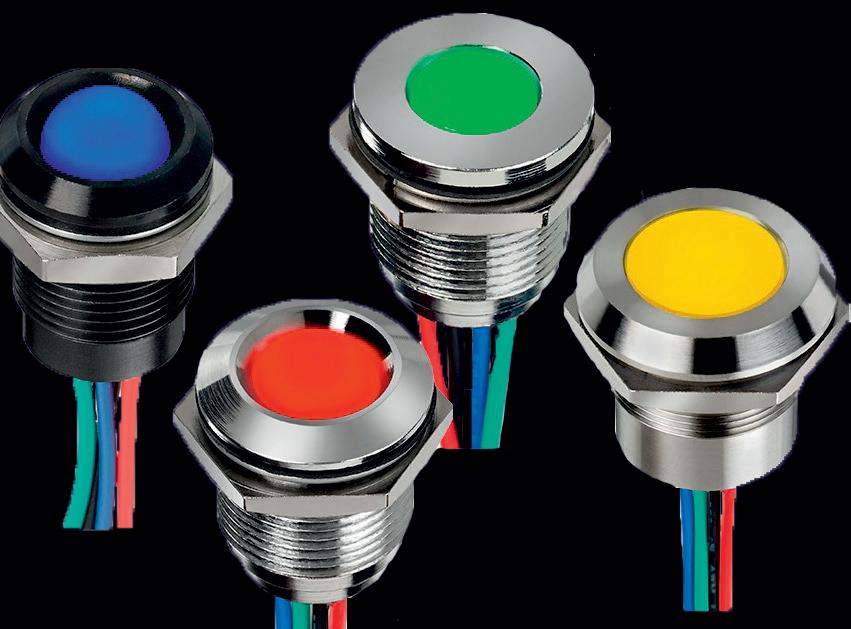
Q Series
www.apem.com
CONTINENTAL

Tires for forklifts which are both autonomous and electric will need to meet contradictory requirements of high durability and low rolling resistance.

experienced R&D team worked closely with OEMs, tire manufacturers and port authorities to develop a solution to meet their needs, developing a wheel better able to cope with the increased stresses and so have signifi cantly more resilience to fatigue,” he says.
This solution, the Infi ni-Forge wheel, is manufactured through a hot induction forming (HIF) process which makes the wheel 50% stronger and last 50% longer compared to conventionally manufactured, multi-piece wheels. The HIF process allows material to be placed where it is needed, and taken out where it is not, leading to an increase in rim strength without a signifi cant increase in weight.
“Whereas traditional wheels would have a lifespan of some 37,000 hours in these challenging applications, AGV Infi ni-Forge wheels, with customized geometry, have demonstrated in fi eld tests a lifespan in excess of 90,000 hours and so are considered to be a structural component of the machine,” explains Bramè.
In some sectors, like agriculture, the use of autonomous vehicles is more complicated due to the varied and less predictable environment in which the machine is working, says Bramè. Duty cycles are not necessarily as repetitive as those of other applications, such as port or surface mine operations, and he says it is unlikely farmers will require 24/7 operation. As such, the challenges for agricultural autonomous vehicle tires and wheels may be diff erent.
“Although we have a good understanding of what the issues are likely to be in [the off -road equipment] sectors, to fully understand each market’s requirements, we will continue to work closely with OEMs, tire manufacturers and end users to make sure we develop solutions that are right for each of them and put the solution through its paces in fi eld tests,” says Bramè.
Smarter tires will be essential
Reinhard Klant, Product Line Manager Earthmoving at Continental, says autonomous equipment in the earthmoving sector is often operated in a convoy to increase effi ciency and enable smooth processes. However, if one of the vehicles breaks down due to an issue with a tire or other system it will not only stop the entire fl eet but also increase the risk of a collision. As such, it will become increasingly more important to use monitoring tools such as sensors which can send alerts to other vehicles as the problem occurs and thus prevent possible collisions.
The company’s ContiEarth tire range is one example of how intelligence is already being added to tires to improve operations. An integrated tire sensor alerts the equipment operator when pressure and temperature of the
Head to the Web
New Report Examines Impact of Autonomous Vehicles on Tires www.oemoff highway.com/21128781 GKN Infi ni-Forge Wheels www.oemoff highway.com/2108918 GKN Profi -Grip Eliminates Tire-to-Rim Slippage www.oemoff highway.com/21017254 Smarter Tire Technologies www.oemoff highway.com/21043545 BKT Looks to Technology, New Materials to Achieve 10% Global OTR Market Share Goals www.oemoff highway.com/21009528 Continental and MAN Present Tire Design for Electric Trucks at IAA 2018 www.oemoff highway.com/21023727
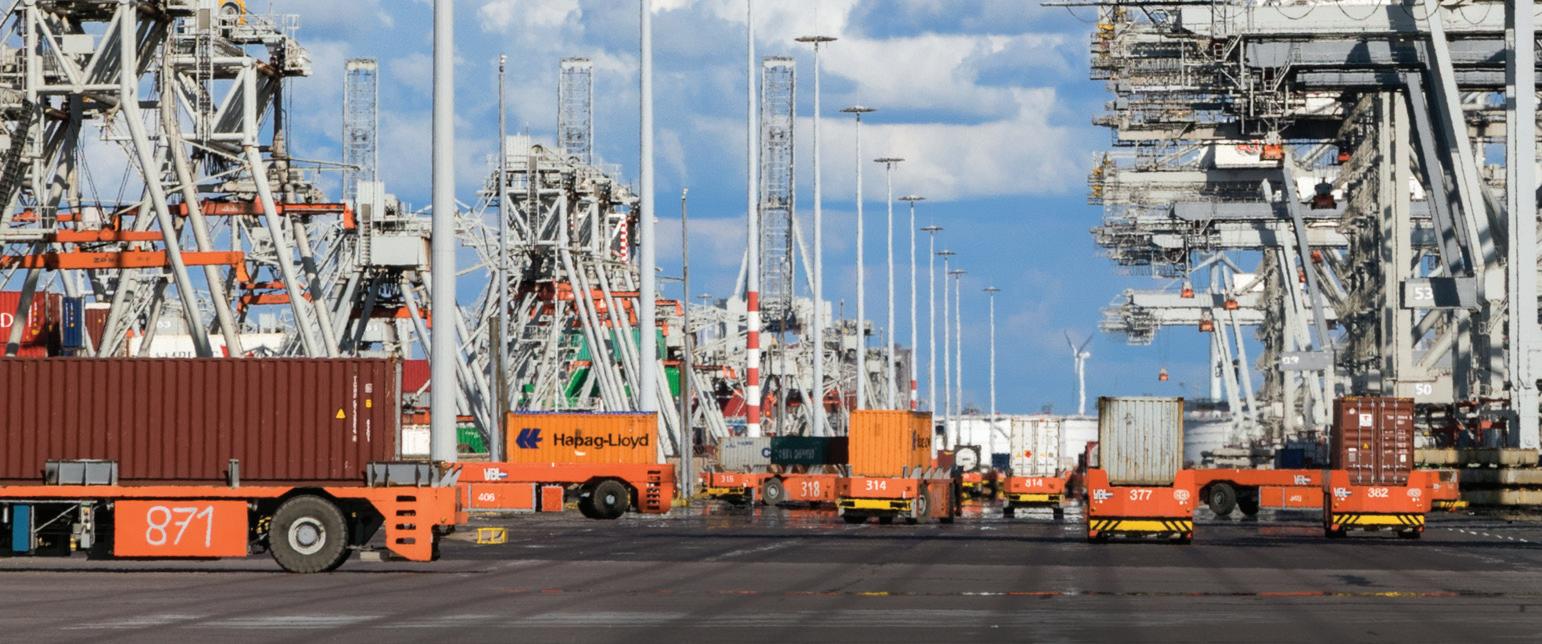
tire deviates from the norm. This helps to increase efficiency and safety by allowing fleets to better plan for maintenance and avoid costly downtime.
Dahl agrees the next stage of development for tires and wheels will be creation of more monitoring tools such as sensors capable of detecting cracks. “This technology will be invaluable in ports, but will also help unlock the potential for autonomous vehicles in sectors such as underground mining, where the risk of a vehicle failing 3 mi. (4.8 km) underground is an obvious barrier to their introduction in these en vironments,” he says. “Clearly if preventative maintenance can be accurately predicted, then vehicles can be taken to the surface at the right time, rather than waiting for a failure to occur.”
Continental says that in the future, the design of and technologies used in machinery will be even more tailored to their working environment. Demands for a more sustainable world will also continue to increase. Because of this, tires of the future will be intelligent, sustainable and environmentally friendly. “The tire of the future will therefore need to be as efficient as possible in order to save fuel and emissions,” says Continental. “At the same time, it will have to be made of recyclable and biodegradable materials.” (See sidebar, pg. 17.)
In general, manufacturers agree that traditional tire and wheel designs will not be able to meet the requirements
The Infini-Forge wheel is manufactured through a hot induction forming process which makes it 50% stronger and increases its lifespan 50%.
demanded by autonomous and electric vehicles, so new solutions will be needed. “Rather than being completely new designs though, these new [tires and] wheels are likely to be evolutions of existing technologies, both product and process, building on the benefits of proven solutions in use globally to respond to the needs of these new machines,” agree both Bramè and Dahl.
“BKT expects to see more of these vehicles appearing in more diverse applications as the technology and ingenuity of equipment designers continues to grow. We are ready for the challenge,” concludes Tatlock. |
Sensors for Mobile Automation

Robust, durable, reliable!
NEW! Sensors with PURE.MOBILE Technology - designed for heavy use in mobile machines
Stroke measurement in hydraulic cylinders - no piston drilling necessary Wire-actuated encoders for linear position measurement with robust string-pot technology Robust rotary encoders for safe angle and speed measurement - up to PLd Inclinometers for non-contact measurement of inclination angle of vehicles








